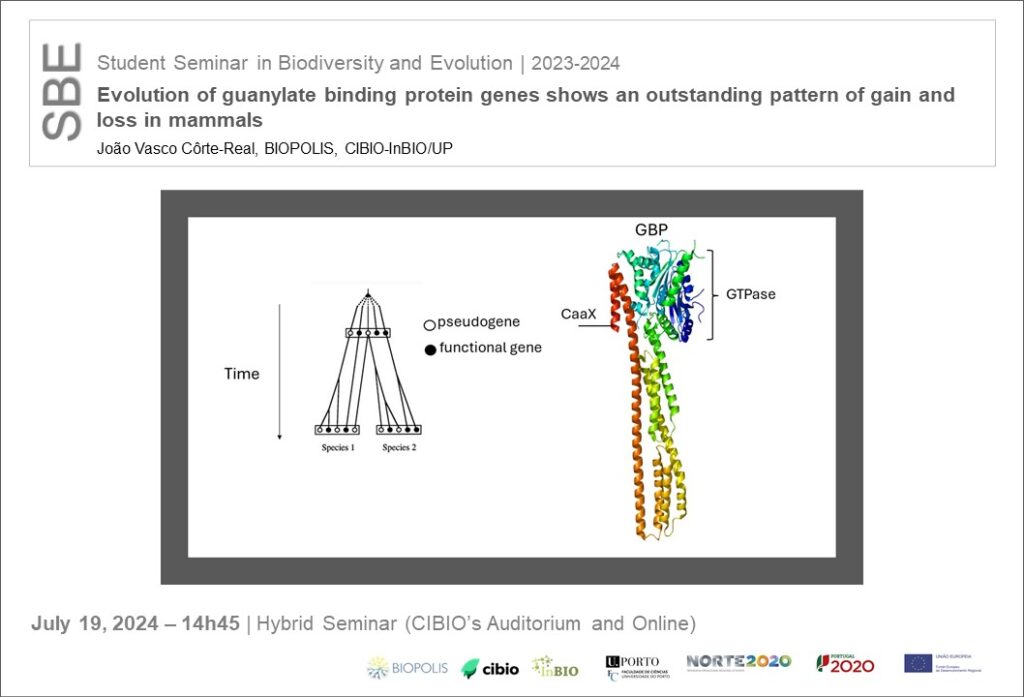Evolution of guanylate binding protein genes shows an outstanding pattern of gain and loss in mammals
João Vasco Côrte-Real, BIOPOLIS, CIBIO-InBIO/UP
July 19, 2024 | 14h45 | Hybrid Seminar (Zoom Link: https://fc-up-pt.zoom.us/j/84429728251)

GBPs are an evolutionary ancient protein family widely distributed among eukaryotes. They are a group of interferon-inducible GTPases and are known to have a role in the cell innate immune response against bacterial, parasitic and viral infections GBPs are a multigene family belonging to the immune system and multigene families related to the immune system have been proposed to follow the birth-and –death model of evolution. Where new genes are generated by duplications events, and they can diverge and gain new functions, become pseudogenized or even be deleted from the genome. We intended to provide more insights regarding the evolution and functional characterization of GBPs in mammals. We performed evolutionary analysis of GBP in primates, muroids and lagomorphs. The latest, we also performed a functional characterization of GBPs in Oryctolagus cuniculus. Results showed that GBPs presented an evolutionary pattern of gain and loss of genes in all species analysed. In primates, GBP1 was present in all species, with GBP3 being exclusive to Simians and most likely originated from GBP1. Moreover, the emergence of GBP7 seems to be originated from GBP4 and GBP7 is exclusive to primates. The evolutionary study of muroid Gbps is quite complex and it could be explained by accelerated diversification rates characteristic in muroids. The most striking was the formation of 4 new groups that we defined as Gbpa, b, c and d. In lagomorphs, we observed that lagomorphs lack GBP3, 6 and 7. Furthermore, Leporidae experienced a loss of GBP2, a unique duplication of GBP5 and a massive expansion of GBP4. Gene expression analysis demonstrated varied tissue expression. Four ocGBPs were IFN-inducible and only one GBP inhibited furin activity. In conclusion, from an evolutionary perspective, GBPs experienced multiple gain and loss events, and the molecular and functional characteristics of ocGBP suggest a role in innate immunity.
More information here